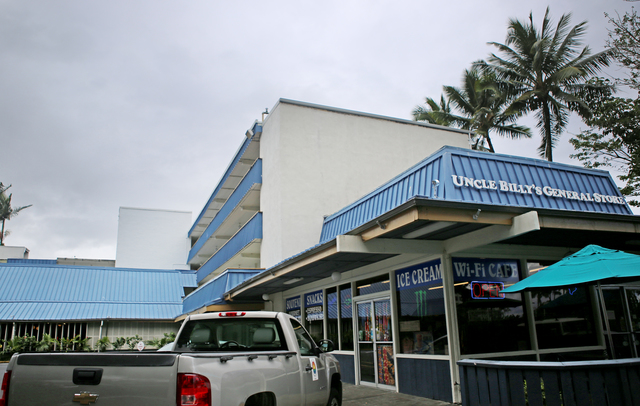HILO — Expiration of land leases on Banyan Drive and in the Kanoelehua Industrial Area is prompting the state to look at changing the way it manages the rental agreements and possibly consolidating properties. ADVERTISING HILO — Expiration of land
HILO — Expiration of land leases on Banyan Drive and in the Kanoelehua Industrial Area is prompting the state to look at changing the way it manages the rental agreements and possibly consolidating properties.
In a series of recently released reports, the Department of Land and Natural Resources explores the economic potential of the major business areas and the viability of covering new land-use agreements with single master leases governed by an association.
There will be a public meeting on the future of these properties Jan. 15 at the Hawaii County Aupuni Center.
The outcome could affect management and redevelopment of three resort-zoned properties — now home to Uncle Billy’s Hilo Hotel, Country Club condominiums and Reed’s Bay Resort Hotel — on the Waiakea Peninsula and 70 leases in the industrial area, 21 of which expire in 2016.
The master lease approach, which could be based on the Sand Island Business Association, appears to be a more viable option for the industrial area, clustered mostly around the Afook-Chinen Civic Auditorium and south of Hilo International Airport, than the three Banyan Drive properties, the reports suggest.
The three condominium and hotel operations are operating under a one-year extension, which will turn into a month-to-month revocable permit, after their leases expired last year.
“While the master lease model may provide advantages from the land management efficiency standpoint, such a model should be assessed on a case-by-case basis,” one of the reports states regarding its application on Banyan Drive. “In this instance, given the limitations of scale, the master lease model is not considered feasible or desirable.”
Many of the KIA leases were established after the 1960 tsunami to help affected businesses relocate.
One of the reports notes many of the parcels were set up to accommodate small family-owned operations. As a result, many are smaller than what the market currently demands and the state could benefit by consolidating contiguous parcels when seeking new leases.
The KIA leases comprise 59 acres and raise $2.1 million annually for DLNR. The average lot size is 0.84 acre, which is smaller than a typical lot at Shipman Industrial Park near Keaau.
A lodging demand analysis highlighted some of the issues facing the Banyan Drive resorts.
According to the report, visitors to Hilo tend to have shorter stays and fewer return visits than other parts of the state, with weather, limited entertainment options and aging hotel infrastructure among the reasons cited.
While its hotels account for about 75 percent of the town’s lodging capacity, they only capture about 29 percent of visitor stays.
A new, higher-end hotel capable of hosting conferences and events would help attract more visitors, with ongoing renovations at the Hilo Naniloa Hotel providing a possible test case, the report says.
One of the reports also included a look at the overall Big Island economy. While it noted the number of jobs remained below pre-recession levels as of 2013, the island is forecast to see the most significant job growth in the state through the next few decades.
The number of jobs is expected to grow by 31 percent by 2040, about twice the statewide estimate.
By then, Hawaii County is forecast to have the second-most jobs in the state after surpassing Maui County.
For more information, and to submit comments, visit https://dlnr.hawaii.gov/ld/kanoelehua-and-banyan-drive-studies.
Email Tom Callis at tcallis@hawaiitribune-herald.com.



